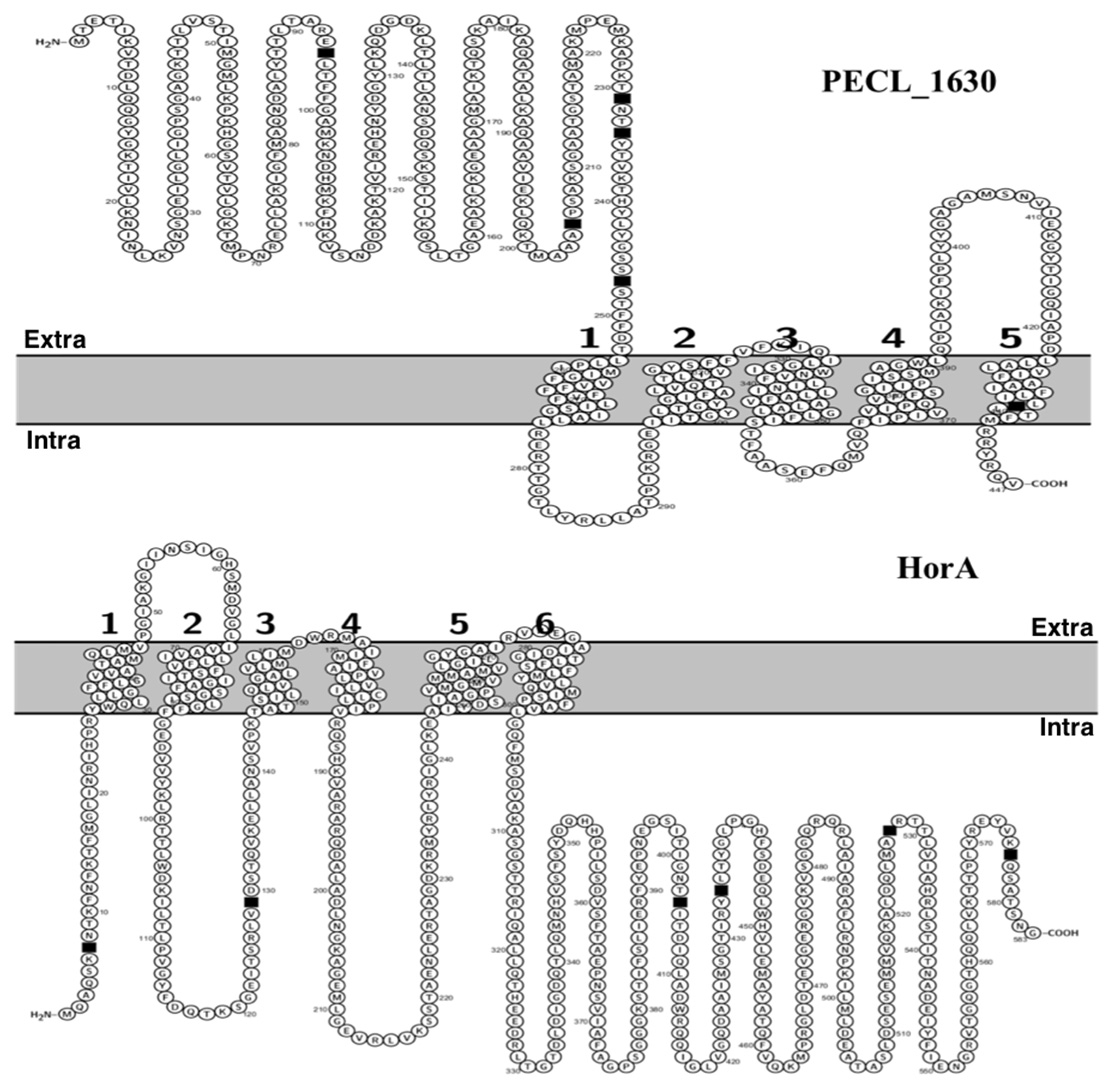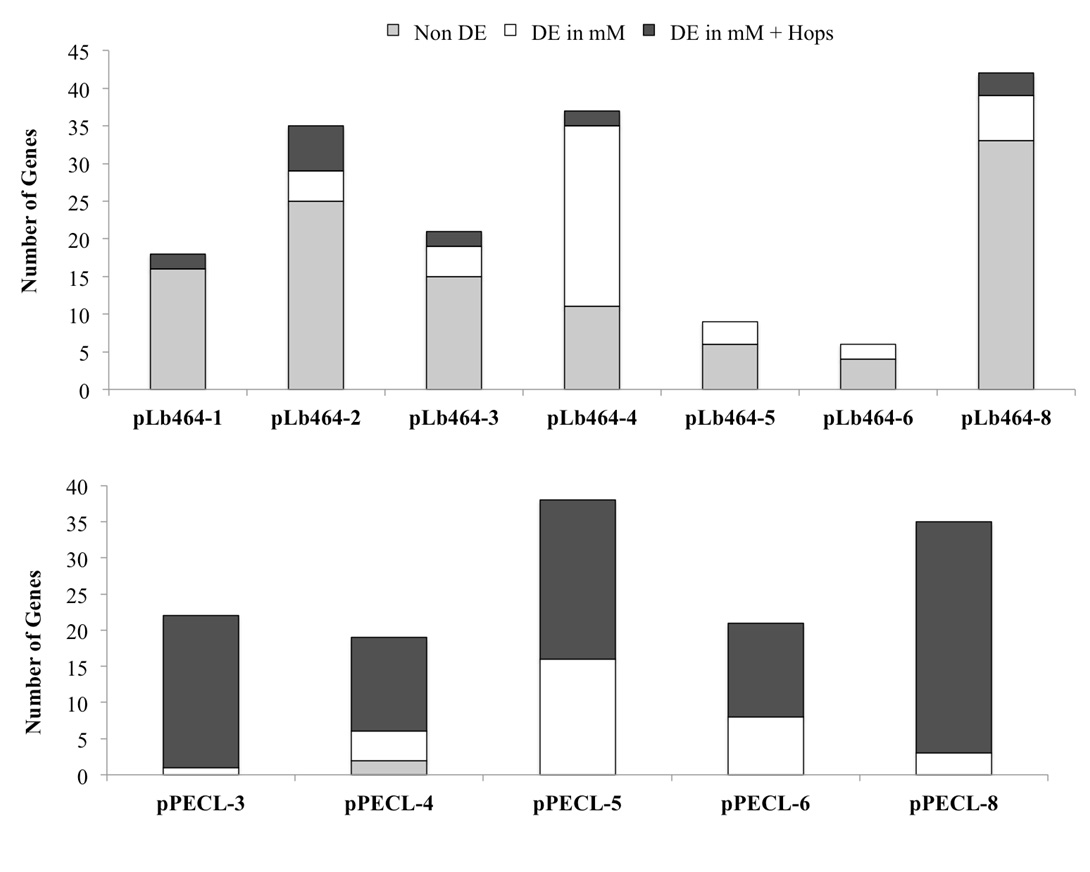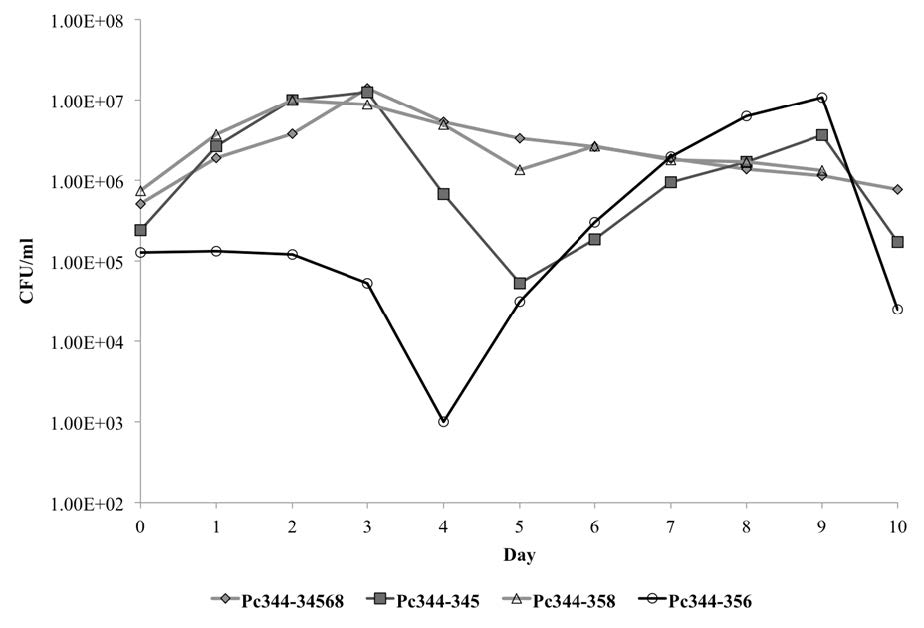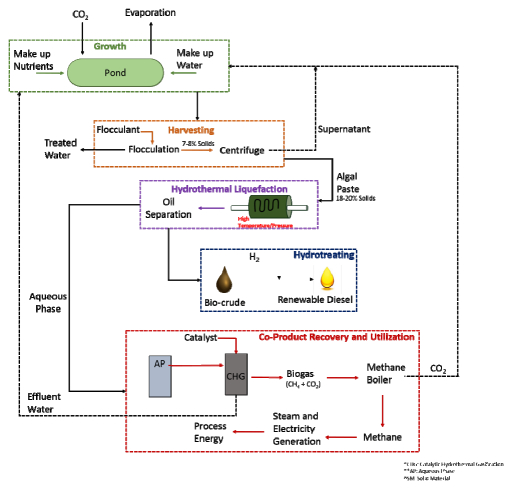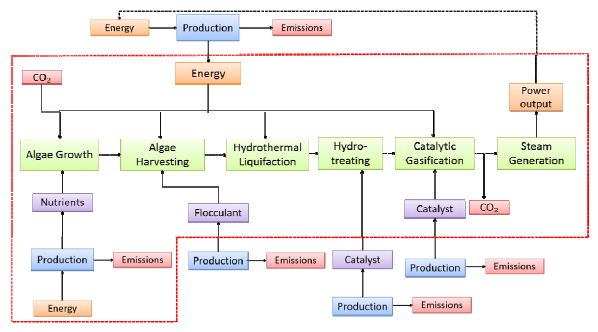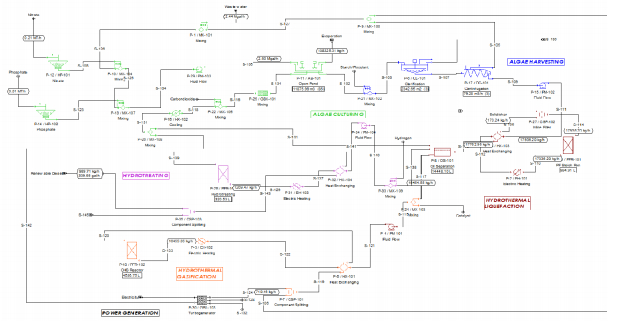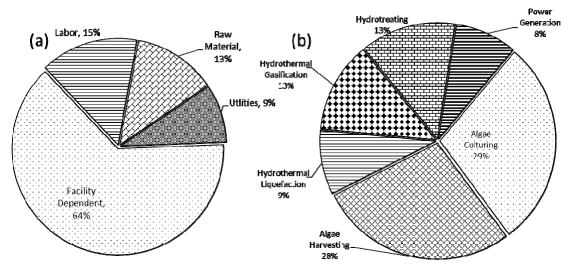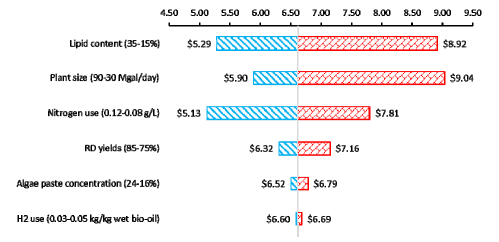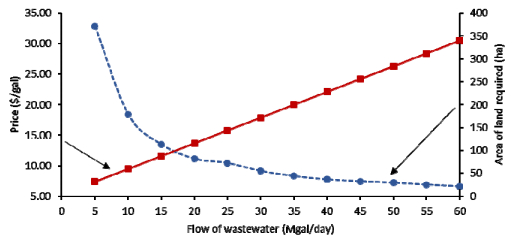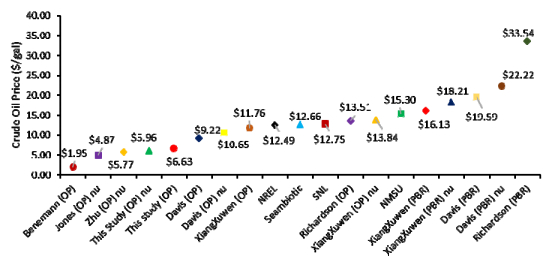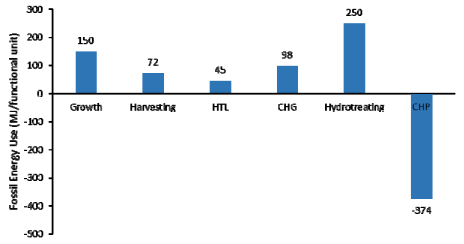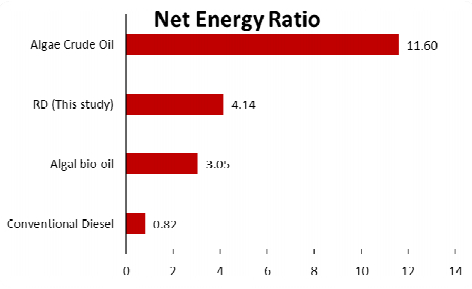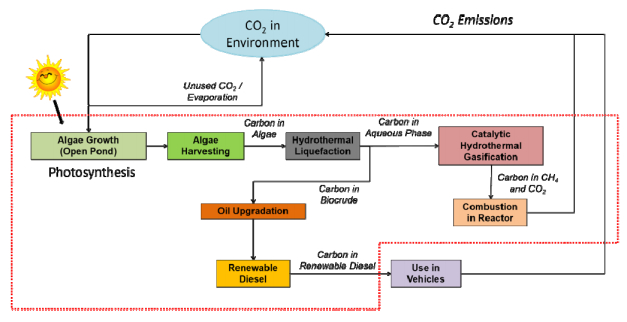Abbreviations
| ABC | ATP-binding cassette; |
| BU | bitterness units; |
| CDS | coding sequence(s); |
| DE | differentially expressed/differential expression; |
| FC | fold-change; |
| LAB | lactic acid bacteria; |
| Lb464 | Lactobacillus brevis BSO 464; |
| ncRNA | non-coding RNA; |
| Pc344 | Pediococcus claussenii ATCC BAA-344T; |
| PCN | plasmid copy number; |
| PMF | proton motive force; |
| RNASeq | RNA sequencing; |
| SDE | significantly differentially expressed |
1. Introduction
Bitter acid compounds derived from hops have long been viewed as the defining physiological stress for microorganisms growing in the niche environment of beer. Accordingly, hop-tolerance is viewed as the attribute that separates beer-spoiling lactic acid bacter ia (LAB) from benign, or non- spoiling isolates [1]. Hop bitter acid compounds have demonstrated antimicrobial activity as they act as proton-ionophores, dissipating the pH gradient (proton motive force; PMF) across the cell membrane and reducing PMF-dependent activities such as nutrient uptake [2]. Eventually, this loss of function and decrease in cell permeability inhibits cell growth and can result in cell death [2,3]. Further, as an exchange of proton and divalent cations (Mn2+) is involved in PMF regulation, intracellular depletion of Mn2+ levels results in both oxidative stress and a loss of some enzymatic function [4,5]. Efforts to characterize the genetic elements mediating the response to the hops challenge and onset of oxidative damage has led to identification of three principal genes, namely, hitA [6], horA [7], and horC [8], all plasmid-located and coding for membrane-associated transporters serving to maintain cell integrity in the presence of hops.
These three hop-tolerance genes are frequently utilized as predictive markers for not only hop tolerance, but also the overall beer-spoilage ability of a LAB isolate. Unfortunately, these genes fail to perfectly correlate with beer-spoilage ability and on their own are insufficient to confer hop tolerance to LAB beer-spoilage organisms (BSOs) [9,10,11,12]. In fact, particular LAB isolates capable of spoiling beer have been found that do not contain any of the three hop-tolerance genes [J. Bergsveinson and B. Ziola, unpublished results; 9]. That the presence of only one o r even several hop-associated genes fails to sufficiently describe tolerance strongly suggests multiple cellular defenses are likely employed to mediate hop damage [1,4,5]. Further, given the diversity and heterogeneity of LAB in general, and the number of membrane transporters and transport systems that they contain, it is not surprising that three genes fail to consistently describe hops stress tolerance across all beer-spoilage LAB [12,13].
To delineate the transcriptional response specific to the presence of hops, whole-transcriptome analysis (RNA sequencing; RNASeq) was used to assess two beer-spoilage isolates during growth in a basic nutritive medium and the same medium with a growth-limiting level of hops. Whole- transcriptome analysis has been performed for both isolates during growth in the beer environment [14,15], and these previous transcriptional data sets provide a detailed framework within which to consider whole-transcriptome sequencing of organisms growing under hop-induced duress.
2. Materials and Methods
2.1. Isolate and growth conditions
Lactobacillus brevis BSO 464 (Lb464; BSO, beer-spoilage organism) [16,17] and Pediococcus claussenii ATCC BAA-344T (Pc344; also available as DSM 14800T and VTT E-032355T) [18,19] were used for analysis. The Pc344 strain used had a non-ropy phenotype in that it did not contain plasmid pPECL-7, which encodes the glucosyltransferase gene gtf that is responsible for producing exopolysaccharide, or rope, that interferes with RNA extraction.
The original Lb464 strain (contains eight plasmids) [17,20] and the Pc34434568 strain (contains seven plasmids, including cryptic plasmids pPECL-1 and -2) [15,19] were taken from -80 °C stock and cultivated in MRS broth at 30 °C overnight. From these cultures, 1 ml was inoculated into 100 ml of modified MRS, pH 5.5 (mMRS; lacks Tween 80) and into 100 ml of mMRS, pH 5.5, containing either 50 bitterness units (BU) of hop extract for Lb464 or 35 BU of hop extract for Pc344. These media are referred to as mM and mM + Hops, respectively, with L- or P- prefix to denote Lb464 and Pc344 samples, respectively.
For mM + Hops preparation, isomerized hop extract [Isohop®; 28-32% w/w iso-α-acids in an aqueous solution of potassium salts; John I. Haas Inc., Washington, DC] was diluted 1:4 with 95% (v/v) ethanol and added to mMRS broth to the appropriate BU level. mM and mM + Hops cultures were then incubated at 30 °C until mid-logarithmic growth was established (Figure 1) (Lb464 = 14 h for L-mM controls, OD600nm~0.3; and 28 h for L-mM + Hops samples, OD600nm~0.1; Pc34434568 = 5 h for P-mM controls, OD600nm~0.25; and 35 h for P-mM + Hops samples, OD600nm~0.1), at which point cells were harvested for RNA extraction.
2.2. RNA isolation and sequencing
Cultures were portioned into 35 ml aliquots and cells collected by centrifugation (10, 000 × g for 3 min). The cell pellets were flash-frozen in liquid N2, stored overnight at -80 °C and pooled during the first RNA extraction step. Total RNA isolation, mRNA purification, rRNA removal, and cDNA preparation were performed as in [14]. cDNA quality was assessed using previously described primers for genes proC and rpoB for Lb464 and ldh and gyrA for Pc34434568 [21].
Samples were multiplexed and sequenced via lllumina HiSeq at the National Research Council Plant Biotechnology Institute, Saskatoon, SK. Reads were visualized via FastQC version 0.9.3 for quality and Trim Galore version 0.3.3 was used to remove adaptors from read ends and poor quality reads such that an average Phred quality score of≥30 for the library was achieved (Barbraham Bioinformatics; http://www.bioinformatics.babraham.ac.uk/). Resultant reads < 20 nucleotides long were also discarded. Bowtie 2 version 2.2.3 (run in -M mode, -very-sensitive for end-to-end alignments and -X 400 for maximum fragment length [14,15]) was then used to align reads to coding sequences (CDS) of the Lb464 genome [17] (NCBI BioProject Accession No. PRJNA203088) and to the Pc344 genome (NCBI BioProject Accession No. PRJNA81103) (Table 1). All rRNA and tRNA sequences were removed for both Lb464 and Pc344. Several transcripts were added to the feature file for Pc344 that had been identified in a previous transcriptome study [15], but had not yet been added to the NCBI Pc344 annotation (Table S1).
Table 1. RNASeq results for Lb464 and Pc34434568 grown in the presence of hop extract.
| Sample a | Bowtie2 Alignment of QC reads | DESeq 2 |
| Paired Reads | % Aligned Readsc | % rRNA Readsd | # Single reads mapping to CDSe | # SDE Genes (%)f | # SDE genes per mediumg | Number of genes >2Log2 FCh |
| L-mM + Hops-Ib | 15,215,309 | 99.84 | 90.4 | 3,535,765 | 629
(23.80%) | 352 | 14 |
| L-mM + Hops-II | 12,414,348 | 99.57 | 90 | 3,094,728 |
| L-mM-I | 13,652,921 | 94.93 | 76.4 | 3,324,704 | 277 | 5 |
| L-mM-II | 14,027,270 | 91.68 | 75 | 3,537,528 |
| P-mM + Hops-Ib | 13,158,012 | 97.18 | 6.4 | 21,097,813 | 1230
(64.40%) | 607 | 95 |
| P-mM + Hops-II | 14,059,550 | 97.6 | 4.8 | 23,300,698 |
| P-mM-I | 14,122,554 | 86.41 | 67.4 | 4,872,276 | 623 | 10 |
| P-mM-II | 15,256,954 | 89.85 | 63.6 | 7,294,295 |
a Samples coded as: L- (Lb464) and P- (Pc34434568); “mM” (modified MRS broth, pH 5.5) and “mM + Hops” (mMRS broth + hop extract); “I” and “II” denote replicates.
b Lb464 and Pc34434568 were grown in the presence of 50 BU and 35 BU of hops, respectively.
c Percentage of quality-controlled reads aligned to respective genomes according to Bowtie-2 alignment.
d Percentage of aligned paired-end reads corresponding to rRNA genes.
e Total number of high-quality, single read fragments aligning to CDS regions.
f Total number (and %) of significant differentially expressed (SDE) transcripts based on P-adjusted < 0.1.
g Number of SDE transcripts in given medium.
h Number of genes that are expressed at > 2Log2 fold-change (FC) in mM + Hops compared to mM. |
2.3. Differential expression analysis
DESeq 2 version 1.8.1 was implemented in RStudio [22] to perform differential expression (DE) analysis on Lb464 and Pc344 read counts, with a false discovery rate of 0.1 [23]. Transcripts with a P-adjusted false discovery rate value less than 0.1 were taken as significant and examined further (Table S2 and S3). Fold-change (FC) values are log transformed for reporting as this transformation minimizes skew in the data set by reducing variance in gene expression levels.
2.4. Generation and analysis of plasmid variants
Pc344 plasmid variants were generated as described in [20] by using the plasmid-curing agent novobiocin, and screened for with Pc344-plasmid-specific multiplex PCRs (Table 2). Both multiplex PCRs used a program of 95 °C for 1 min, followed by 35 cycles of 95 °C at 15 sec, 57 °C at 15 sec and 72 °C at 1.5 min, with a final hold of 72 °C for 2 min. Growth of Pc344 variants in degassed beer was performed in triplicate, as described previously [20]. The plasmid profile of each Pc344 variant was confirmed throughout growth in degassed beer by screening individual colonies from agar plates with the Pc344-plasmid multiplex PCR.
Table 2. Multiplex PCR primers for detection of Pc344 plasmid variants.a
| Multiplex | Plasmid Target | Primer Name | Sequence (5’ → 3’) | Primer Binding Location | Amplicon Size (bp) |
| pPECL-3 | PECL_25-1F | CACTCGCCAAGACTGGTGTTC | 12785–12805 | 275 |
| PECL_25-2R | CGTGGCATGACCATGAATGATCG | 13059–13037 |
| MixA | pPECL-5 | p5_1F | CAGATCAACGCCAAGCTCAAGTG | 1257–1279 | 515 |
| p5_2R | GCCTCGACCGTCTGTTATGATACC | 1770–1747 |
| pPECL-8 | horA-RT-F | GGATCATCAACTCAATCGGTC | 8380–8359 | 155 |
| horA-RT-R | CCAAAGTGTTGTTCGCAGC | 8534–8553 |
| pPECL-4 | p4_MFS-1F | CCGCAGCTGGCACTAAGGAC | 18690–18671 | 335 |
| p4_MFS-2R | ACTGGACTGGGTCTCCTTCC | 18356–18375 |
| MixB | pPECL-6 | p6_4F | CACGTTCTTCAAAGACCAAGGTTGC | 12017–12041 | 612 |
| p6_5R | ATTTAAGCCAGAATCAAGGGACGAC | 12629–12605 |
| 16S rRNAb | 386F | CTGATGGAGCAACGCCGCGT | 16S rRNA | 148 |
| 534R | ATTACCGCGGCTGCTGG |
a Plasmids that remain in a variant are indicated within the text as superscripted numbers (e.g., Pc344358 contains plasmids pPECL-3, -5, and -8).
b 16S rRNA gene included as positive control for the presence of bacterial DNA in the multiplex PCR. |
3. Results and Discussion
3.1. RNA sequencing and mapping
Lb464 and Pc34434568 cells were collected in duplicate during mid-exponential growth in basic nutrient broth (i.e., mM) and the same medium containing a growth-limiting concentration of hop extract (i.e., mM + Hops) (Figure 1). As noted, a non-ropy variant of Pc344 (missing pPECL-7 and thus the gtf gene) was used for this analysis, however this isolate does not differ from the type strain (full plasmid profile) in tolerance to ethanol, hops, or beer [15,19]. The previous transcriptome analysis of Pc344 during growth in beer was done with a Pc344 isolate that also did not contain pPECL-7, nor pPECL-4 and -6 (denoted as Pc344358), as these two plasmids were found to be lost during RNA preparation [15].
RNA extraction, mRNA purification and sequencing steps for both isolates were successful by a number of verification methods and by the alignment results produced by Bowtie 2 (Table 1). The removal of rRNA from extracted mRNA using RiboZero™ Magnetic Kit was successful (Table 1), with the percentage of reads mapping to rRNA genes similar to or lower than in previous studies [14,15]. As in [14], sub-sampling the number of aligned reads prior to DE testing only limited the number of features that exhibited coverage, causing DESeq2 not to test these features. Thus, all quality controlled and filtered reads for each sample were used for d ownstream DE testing (Table 1).
3.2. Differentially expressed transcripts in response to hop stress
Approximately 64% of the Pc34434568 genome was significantly DE (SDE; P-adjusted < 0.1) during growth in 35 BU hop extract, whereas only 23% of the Lb464 genome was SDE during growth in 50 BU hop extract (Table 1). Furthermore, a higher number of highly SDE genes was seen for Pc344 than for Lb464, with all top 25 most highly SDE genes in Pc344 being expressed at greater than 3Log2 FC in mM + Hops, compared to only the top four SDE genes in Lb464 expressed at this level (Table 3). The difference in total SDE transcripts was unexpected given that hop extract was clearly affecting the growth rate of each bacterium (Figure 1). Although there are fewer genes SDE at levels above 2Log2 FC in the Lb464 data set compared to Pc34434568, the genes that are DE are expected to be indicative of the basic physiological response of Lb464 to the presence of hop extract.
Table 3. Top 25 Lb464 and Pc34434568 transcripts differentially expressed in response to hop extract.
| Lb464 | Pc34434568 |
| Log2 FC | Gene | Locus Tag | Location | Log2 FC | Gene | Locus Tag | Location |
| 4.1 | horC | L747_00215 | pLb464-2 | 5.5 | ABC transporter family protein | PECL_1630 | Chromosome |
| 3.5 | GCN5 family N-acetyltransferase | L747_10185 | Chromosome | 5.4 | putative ncRNA between PECL_171 & PECL_172 | PECL_2059 | Chromosome |
| 3.4 | manganese transporter | L747_13605 | Chromosome | 5.3 | TetR family transcriptional regulator | PECL_1629 | Chromosome |
| 3.0 | glutamate decarboxylase | L747_01690 | Chromosome | 4.4 | VIT family protein | PECL_1743 | Chromosome |
| 3.0 | MarR family transcriptional regulator | L747_10180 | Chromosome | 4.2 | AAA ATPase | PECL_1544 | Chromosome |
| 2.7 | glutamyl-tRNA synthetase | L747_01695 | Chromosome | 4.0 | prolyl oligopeptidase family protein | PECL_1605 | Chromosome |
| 2.6 | glutamate: γ -aminobutyrate antiporter | L747_01685 | Chromosome | 3.9 | putrescine carbamoyltransferase | PECL_1708 | Chromosome |
| 2.6 | transposase IS30 | L747_00220 | pLb464-2 | 3.8 | hypothetical protein | PECL_1744 | Chromosome |
| 2.5 | LytR family transcriptional regulator | L747_12540 | Chromosome | 3.8 | monooxygenase | PECL_1591 | Chromosome |
| 2.3 | hypothetical protein; putative DNA repair | L747_12210 | Chromosome | 3.6 | peptide methionine sulfoxide reductase MsrB | PECL_935 | Chromosome |
| 2.2 | gluconate:H+ symporter | L747_09105 | Chromosome | 3.6 | NADP oxidoreductase coenzyme F420-dependent family protein | PECL_1592 | Chromosome |
| | | | | | | |
| 2.1 | universal stress protein UspA | L747_10150 | Chromosome | 3.6 | NADH peroxidase | PECL_293 | Chromosome |
| 2.1 | GNAT family acetyltransferase | L747_07675 | Chromosome | 3.6 | agmatine putrescine antiporter | PECL_1707 | Chromosome |
| 2.0 | taurine ABC transporter ATP-binding protein | L747_12545 | Chromosome | 3.6 | metal ion transporter metal ion family protein | PECL_638 | Chromosome |
| 1.9 | Hypothetical protein; putative N-acetyl transferase activity | L747_10900 | Chromosome | 3.5 | hypothetical protein | PECL_456 | Chromosome |
| 1.9 | tRNA synthetase subunit beta | L747_11740 | Chromosome | 3.4 | hypothetical protein | PECL_639 | Chromosome |
| 1.9 | ATPase | L747_06760 | Chromosome | 3.4 | hypothetical protein | PECL_2040 | pPECL-8 |
| 1.9 | hypothetical protein | L747_12205 | Chromosome | 3.4 | hypothetical protein | PECL_137 | Chromosome |
| 1.7 | cell division protein FtsW | L747_12555 | Chromosome | 3.3 | phosphotransferase enzyme family protein | PECL_294 | Chromosome |
| 1.7 | hypothetical protein; putative ABC transport transmembrane domain MetI-like | L747_12550 | Chromosome | 3.2 | hypothetical protein | PECL_1545 | Chromosome |
| 1.6 | hypothetical protein | L747_11705 | Chromosome | 3.2 | hypothetical protein | PECL_1958 | pPECL-8 |
| 1.6 | NADH-dependent flavin oxidoreductase | L747_12670 | Chromosome | 3.1 | transcriptional regulator Xre family | PECL_1964 | pPECL-8 |
| 1.6 | oxidoreductase | L747_11680 | Chromosome | 3.1 | hypothetical protein | PECL_2031 | pPECL-8 |
| 1.5 | manganese transporter | L747_09040 | Chromosome | 3.0 | AbrB family transcriptional regulator | PECL_1979 | pPECL-3 |
| 1.5 | hypothetical protein | L747_12200 | Chromosome | 3.0 | hypothetical protein | PECL_1907 | pPECL-5 |
While it is surprising the sub-lethal level of 50 BU hop extract does not elicit a hop-stress response in Lb464 comparable to the strength of the response observed in Pc344 by 35 BU hop extract, this does fit with Lb464 being a highly hop-tolerant organism [10,11,14,20,21]. This finding supports the theory that a strong hops-specific transcriptional response, as observed in Pc344, does not dictate the overall beer-spoilage phenotype or virule nce, given that Pc344 is only capable of growth in degassed beer and Lb464 is capable of growing in the more extreme environment of pressurized/gassed beer [11]. The present transcriptome data thus provides compelling evidence for the general hop-response not being the sole defining component of specialized adaptation to the pressurized/gassed beer environment by true beer-spoilage LAB.
3.3. Lb464 response to hop extract
The most highly DE transcript in Lb464 in response to hop extract is that of membrane- transport protein horC found on plasmid pLb464-2 (Table 3; Table S2). This finding supports the long-held contention that horC is an important hop-tolerance gene [1], especially so for Lb464 [20,21]. Interestingly, the putative transcriptional regulator of this hop-gene, horB, is not DE in the presence of hop extract, in fact it appears to have increased expression levels in mMRS medium (Table S2). This finding confirms both previous RNAseq analysis of Lb464 that found only horC to be SDE during growth in beer [14], and previous droplet digital PCR (ddPCR) analysis that suggests horB to be a repressor of horC activity in all beer-spoilage-related lactic acid bacteria tested [10].
The other two hop-tolerance genes hitA and horA are induced when Lb464 grows in the presence of 50 BU hop extract relative to in mMRS medium alone (1.3 and 0.5Log2 FC, respectively; Table S2). A putative pseudogene of a chromosomal manganese transporter is much more highly expressed with 50 BU hop extract present (3.4Log2 FC; Table 3) than is hitA; however, as pseudogenes typically lack function, this transcript likely is degraded following its synthesis. This points to redundant expression of manganese transport proteins, which is logical given that tolerance to low manganese levels is thought to be a required of beer-spoilage LAB [4].
As hitA, horA, and horC are encoded by separate plasmids, plasmid copy number (PCN) could affect expression of these genes, with specific plasmids increasing in number in response to specific environmental factors (i.e., increasing stress) [15,20]. Alternatively, the difference in expression could result from transcriptional regulation. Regardless, the data show that expression from pLb464-1 (horA) and pLb464-2 (horC) is induced in response to hop extract, as they were in the beer environment [14]. This fits with horA and horC both havin g specificity for hop compounds.
Other notable SDE Lb464 transcripts in mM + Hops are involved in glutamate metabolism, including glutamate:γ-aminobutyrate antiporter (L747_01685), glutamate decarboxylase (L747_01690) and glutamyl-tRNA synthetase (L747_01695) (Table 3). These genes have been implicated as important in acid tolerance and intracellular pH homeostasis by consuming protons in a decarboxylation reaction that produces γ-aminobutyrate (GABA) from glutamate [24], with the antiporter system then coupling uptake of glutamate to the efflux of GABA [24]. Glutamate is a key metabolite in linking nitrogen and carbon metabolism, which Lb464 likely does efficiently in stressful environments such as degassed and gassed beer [14,24]. Other highly SDE genes are involved in the general stress response, including the GNAT family acetyltransferase (L747_07675 and 10185) which plays a role in transcriptional regulation of the stress response [25]; a universal stress protein UspA (L747_10150); LytR family transcriptional regulators (Lb464_12540), which regulate putative membrane signal transducers [26]; and a gene in the MerR family (L747_11460), which includes genes involved in oxidative stress response and metalloregulation (Table 3) [27]. Further, there are several SDE transcripts involved in general pH/PMF maintenance, including L747_06760, an ATPase, and L747_09105, a gluconate:H+ symporter (Table 3).
Interestingly, Lb464 transcripts related to citrate and malate metabolism, which are also involved in fatty acid production and pyruvate production (L747_09160 to L747_09195), are up regulated in mM + Hops relative to mM (0.3-0.8Log2 FC; Table S2). These transcripts were not SDE during Lb464 growth in degassed or gassed beer [14], however, were SDE in Pc344358 during exponential growth in beer [15]. This may mean Lb464 more rapidly exhausts citrate and malate in beer than does Pc344 (i.e., prior to mid-exponential growth). Nonetheless, both isolates will utilize these substrates, when available, for energy and fatty acid production.
3.4. Pc34434568 response to hop extract
The most highly expressed Pc34434568 transcript in response to growth-limiting concentrations of hop extract (mM + Hops) relative to mM is an ATP-binding cassette (ABC) transporter protein, PECL_1630, with the third most highly DE transcript, PECL_1629, being a TetR family transcriptional regulator that likely regulates PECL_1630 activity (Table 3). This is surprising given that Pc34434568 has the hop-specific ABC transporter horA encoded on pPECL-8, which is SDE to only half the extent of PECL_1630 during growth in 35 BU hop extract (2.7 vs. 5.4Log2 FC, respectively).
PECL_1630 is a 447 amino acid ABC-2 type transport protein, smaller than HorA at 583 amino acids and with a markedly different secondary structure predicted via Protter (Figure 2) [28]. HorA is purported to function as a dimer and actively transport hop iso-α-acids from the cell through the expenditure of cellular ATP, which conforms to the prediction of the ATP binding P-loop being located in the intracellular space (Figure 2) [7,29]. In contrast, the ATP binding motif of PECL_1630 is found in the extracellular space, and the protein has one less predicted transmembrane loop than HorA (Figure 2).
Based on predicted protein structure, the most likely function of PECL_1630 is to scavenge extracellular ATP and import it back into surviving cells following disruption of the PMF of some cells by hop iso-α-acids and leakage of ATP into the environment. Alternatively, PECL_1630 could be involved in ATP export, as has been shown to occur during exponential growth of bacteria [30]. Export of ATP by healthy cells could assist near-by cells by providing energy for import by stressed sister cells. Interestingly, plant cells have been shown to use ATP export for specific intercellular signaling that a microbial infection is present [31,32]. Since beer-related LAB are presumed to originate from plant environments (i.e., are introduced into the brewery on raw plant materials), this suggests LAB may have acquired this transport protein from plants. A BlastN [33] search of the PECL_1630 sequence revealed the same gene only exists in P. claussenii TMW 2.54 (CP014963.1) and TMW 2.53 (CP014933.1) (100% identity), which are beer-spoilage strains isolated from a brewery in the Netherlands. BlastP [33] analysis revealed that similar proteins with the ATP binding P-loop facing the extracellular space can be found in Lactobacillus (68% identity), however, proteins with a structure similar to PECL_1630 could not be found in Lb464, suggesting this gene specific to be brewing-related P. claussen ii.
Previous RNAseq analysis of Pc344358 found horA to be more greatly expressed than PECL_1630 during growth in beer (though both genes were SDE), with a demonstrable increase in the PCN of pPECL-8, which encodes horA [15]. Though PCN may influence differences in expression levels observed, the strong expression of PECL_1630 in mM + Hops indicates that it likely has some hops-stress specificity and points to a redundant, hop-resistance mechanism that is chromosomally based [15].
Comparisons of hop-specific transcripts from Pc34434568 as analyzed here and beer-specific transcripts from Pc344358 as analyzed earlier [15] are made with the noted caveat that the plasmid profiles of the two Pc344 strains are slightly different. Secondly, the basic nutritive media used in each study differed slightly. For beer, the comparison media used was MRS, pH 6.5 that contained Tween 80 [15]. However, since Tween 80 has been shown to interfere with the antimicrobial action of hops [7], MRS without Tween (mM) was used in the present study. Thirdly, slightly different RNA extraction and processing methods, and subsequent data treatment steps were used here compared to those described in [15]. Nonetheless, general statements concerning the functional roles and characteristics of abundantly expressed transcripts in each data set are made to highlight notable similarities and differences.
Of the 25 mos t highly DE Pc34434568 genes during growth in mM + Hops, nine are hypothetical proteins, with five chromosomally located and four found on pPECL-8 (Table 3). Highly expressed transcripts are involved with managing oxidative stress and homeostasis and/or providing for an energetically favorable means of metabolism and energy production, such as a VIT family protein, putrescine carbamoyltransferase, monooxygenase, agmatine/putrescine antiporter, peptide methionine sulfoxide reductase, and proteins involved in metal ion transport (Table 3). Putrescine carbamoyltransferase, and agmatine/putrescine antiporter are involved in biogenic amine metabolism and were also among the top 20 expressed transcripts in the beer-specific Pc344358 RNAseq analysis [15], suggesting these genes respond specifically to the proton-ionophore activity of hops [5] by contributing to PMF maintenance through metabolism of biogenic amines.
Putative non-coding RNA (ncRNA) species were also demonstrated to be important for growth of Pc344358 in beer [15], and are hypothesized to be present in Lb464 when grown in beer as well [14]. Comparatively, there are considerably fewer ncRNA transcripts SDE in Pc34434568 in mM + Hops, namely, chromosomal PECL_2059 and 2060 (Table 3; Table S3), which were confirmed earlier via real-time quantitative PCR to be significantly transcribed in beer [15]. Given that these two transcripts are still SDE in m M + Hops suggests that their activity is part of the response to general stress and/or functioning and regulation of the cell. Overall, and not surprisingly, the total beer environment appears to elicit transcription of ncRNA and small regulatory RNAs to a greater extent than does the singular stress of hops.
Pittet et al. [15] suggested that malolactic and citric acid fermentation genes (PECL_1506 and 253 to 258, respectively), which are SDE in beer, generate buffering capacity and PMF, thus counteracting the action of hops and low pH. Indeed, malolactic operon components are expressed at ~2.3Log2 FC and the citrate operon between 1.6-1.8Log2 FC in response to hop extract (Table S3); these genes were also among the top 20 most highly SDE Pc344 genes in transcriptome analysis during growth in beer [15]. This confirms that they are transcribed in response to oxidative or PMF stress, which can be induced solely by hops. The chromosomal fab operon, which is responsible for fatty acid biosynthesis, was expressed 2- to 3-fold higher in the beer data set, and was thought to be important for dealing with the simultaneous presence in beer of membrane-damaging hops and ethanol [15]. However, the fab operon is not SDE in response to direct challenge of growth-limiting concentrations of hop extract (Table S3). Therefore, membrane adaptation through synthesis or alteration of fatty acid composition is in response to the multiple stresses encountered in beer and not solely an immediate adaptation to hops [4]. Finally, a number of other genes transcribed in Pc344358 when grown in beer are also SDE in Pc34434568 in mM + Hops. Included are two metal ion transporters specific for manganese transport (PECL_313 and 638), the methionine sulfoxide reductases, mrsA and mrsB (PECL_936 and 935), and two other metal transport and homeostasis proteins (PECL_793 and 1579), suggesting that these genes are specifically induced by the presence of hops and are primarily involved in mediating oxidative stress and PMF maintenance (Table 3; Table S3) [15,34].
3.5. Role of plasmids in response to hop extract
3.5.1. Lb464 plasmids
Lb464 plasmids have been shown to be important for Lb464 growth in beer [14, 19] and the most highly SDE Lb464 transcript in mM + Hops is hop-tolerance gene horC encoded on pLb464-2 (Table 3). This confirms previous data showing that loss of the plasmid carrying horC results in a dramatic reduction in hop tolerance and provides further support that horC is a highly active hop-tolerance gene [4,20,21,35]. Of the eight Lb464 plasmids, pLb464-2 has the greatest number of SDE transcripts in mM + Hops (Figure 3), which is interesting given there is considerably less overall plasmid-based transcriptional activity fo r Lb464 in mM + Hops relative to when growing in beer medium [14]. pLb464-8 demonstrates the greatest amount of transcriptional activity in response to hop extract after pLb464-2.
Overall, there appears to be considerable redundancy in tolerance mechanisms encoded by the Lb464 genome (i.e., multiple manganese transporters, efflux pumps, membrane modification proteins) that can mediate hop-stress. This chromosomal coding capacity could also explain the rapid growth of Lb464 in beer (i.e., high beer-spoilage virulence), considering that hop tolerance, and by extension, beer spoilage, is widely accepted as being inherited via plasmids [1,2,7,8,20]. Given evidence that Lb464 likely undergoes DNA recombination, insertion and/or transposition events in stressful environments such as gassed beer [14], it is conceivable that advantageous plasmid-based genes or genes from other organisms encountered in the brewery have been incorporated into the Lb464 genome.
3.5.2. Pc34434568 plasmid response to hop extract
The original genome sequence of Pc344 revealed eight plasmids, ranging in size from 1.8 to 36 Kb [19], with hop tolerance gene horA found on pPECL-8. In the previous transcriptional analysis of Pc344358 [15], it was found that pPECL-4 and -6 were lost during the preparation of samples for RNA sequencing. In the present study, however, both plasmids were present and had specific transcripts with increased expression in mM + Hops.
All SDE transcripts from pPECL-4 and -6 are DE between 0.5 and 2.5Log2 FC during Pc34434568 in mM + Hops, with the highest DE transcripts being hypothetical proteins (Table S3). Similarity between the pPECL-4 and -6 SDE transcripts indicates that they have redundant functions encoded which respond to hops. Of note, pPECL-6 specifically encodes two ABC transporters, (PECL_1939 and 1940) which are both SDE in mM + Hops, but only at ~0.5Log2 FC. Apart from hypothetical proteins, the most highly expressed transcripts on both pPECL-4 and -6 are an antitoxin of a toxin-antitoxin stability system of the RelB family (PECL_1912 and 1929 on each plasmid, respectively).
Although pPECL-4 and -6 were present, it was found that for Pc34434568, pPECL-3, -5 and -8 demonstrated the most significant transcriptional response to hop extract (Figure 3; Table S3), just as they did in beer [15]. During growth in mM + Hops, the most highly expressed pPECL-3 transcript at 2.8Log2 FC is that of dps, which provides DNA protection during starvation, as was also found in beer [15]. Several hypothetical proteins on pPECL-5 and -8 are expressed at greater than 2Log2 FC in mM + Hops (Table S3). Thus, pPECL-3, -5 and -8 transcripts are important for Pc344 in response to hop extract and in beer [15]), confirming that the response to growth in either situation is not mediated by solely one gene, i.e., horA on pPECL-8.
pPECL-8 shows the most SDE transcripts of any plasmid with the majority over 2Log2 FC in mM + Hops (Table S3). Though many pPECL-8 genes encode for hypothetical proteins, notably present is the hop-tolerance gene horA (2.7Log2 FC), and genes involved in cellular maintenance, such as a Type 1 restriction-modification system (2.5Log2 FC), an Xre family transcriptional regulator (3.0Log2 FC) and a DNA-repair protein (2.8Log2 FC) (Table S3). Similar genes are also located on the chromosome; however, they do not show as high Log2 FC as the pPECL-8 transcripts. This indicates that pPECL-8 may have increased in PCN in response to hop extract, and certainly suggests that transcriptional activity off this plasmid is of importance to the cell for cellular mai ntenance and repair under physiological stress.
3.5.3. Role of pPECL-8 and analysis of plasmid variants
To confirm the importance of specific Pc344 plasmids for growth in beer, plasmid variants were generated and tested for overall hop tolerance and growth kinetics in beer (Figure 4), as done previously for Lb464 [20]. Despite the apparent role of pPECL-3, -5, and -8 transcripts in response to hop extract, when these plasmids are lost from the cell there is no statistically significant difference in hop tolerance levels as compared to the Pc344 parent strain which contains all eight plasmids (as assessed via hop gradient agar plates [36]; data not shown). This reinforces the idea that there are redundant, chromosomally encoded proteins capable of either exporting hop compounds, or dealing with the hop-induced damage to the PMF (e.g., ABC transporter PECL_1630).
In terms of beer-spoilage, the most transcriptionally active plasmid during growth in both hop extract and beer [15] is pPECL-8, indicating this plasmid important for Pc344 growth in degassed beer (Figure 4). This is interesting, given pPECL-8 is easily lost from the cell during experimental evident, as no notable difference in the beer-spoilage phenotype or growth kinetics of Pc34434568 and Pc344358 (transcriptome analyzed in [15]) was found. Further evidence of the importance of pPECL- 8 is found though in the combined loss of pPECL-6 and -8 (yielding Pc344345) or pPECL-4 and -8 (yielding Pc344356), which both alter the normal beer-growth pattern (Figure 4). Though Pc344345 grows well initially, it experiences a dramatic death phase compared to that of Pc34434568 and Pc344358, only to grow again after ~6 d. Pc344356 experiences both a prolonged lag phase and smaller death phase before being able to establish successful exponential growth, with CFU/ml increasing 4- log10 fold in a period of 5 d. Though it its noted that the starting inoculum of both Pc344345 and Pc344356 was not as high as the two other variants, a higher inoculum for these two strains was never reached using the standardized growth-assessment protocol [20]. Thus, the loss of pPECL-8 results in an inability of Pc344 to sustain continued growth in beer as evident by the distinct death phases experienced by both variants lacking this plasmid (Pc344345 and Pc344356). Overall, the significant transcription from genes encoded by this plasmid during growth in hop extract and beer supports the importance of pPECL-8 for Pc344 growth in beer [15].
A similar observation was noted in previous analysis of the Lb464 plasmid profile [20], with the loss of pLb464-2 (harboring horC) resulting in the most dramatic alteration of beer-spoilage phenotype. Further, data in Figure 4 also highlights the complexity of plasmid-transcriptional and apparent synergism between plasmid-encoded genes that influen ce the beer-spoilage phenotype of Pc344, as noted previously for Lb464 [20]. This suggests that both Lb464 and Pc344 each have one super critical plasmid for facilitating normal growth in beer (i.e., pLb464-2 for Lb464 and pPECL-8 for Pc344).
4. Conclusions
The whole-transcriptome sequencing of Lb464 and Pc34434568 growing in sub-lethal concentrations of hop extract highlights the variable nature of these two isolates in their ability to tolerate hops. While Lb464 is highly hop tolerant and capable of growing in pressurized/gassed beer, it exhibited a weaker transcriptional response to the growth-limiting challenge of 50 BU of hop extract compared to the strong transcriptional response of the pressurized/gassed beer-intolerant Pc34434568 to 35 BU hop extract. This supports the theory that a strong transcriptional response to hop extract does not facilitate or guarantee strong beer-spoilage virulence, and that adaptation to the extreme beer environment requires non-hop specific adaptations. Common transcripts expressed by both isolates in response to hop extracts are concerned with mediating oxidative stress, and include transcriptional regulators and transporters. Though transcriptional activity from plasmids in both isolates is evident, each isolate has one super critical plasmid that harbors a hop-tolerance gene and has increased transcriptional activity during bacte rial growth in both the presence of hop extract and in beer.
Acknowledgements
JB was supported through a Graduate Scholarship from the College of Graduate Studies at the University of Saskatchewan. She also was awarded the 2012 and 2013 Ecolab Scholarships, and the 2014 Roger C. Briess Scholarship by the American Society of Brewing Chemists Foundation. This study was funded through NSERC Discovery Grant 24067 awarded to BZ.
Conflict of Interest
All authors declare no conflicts of interest in this paper.









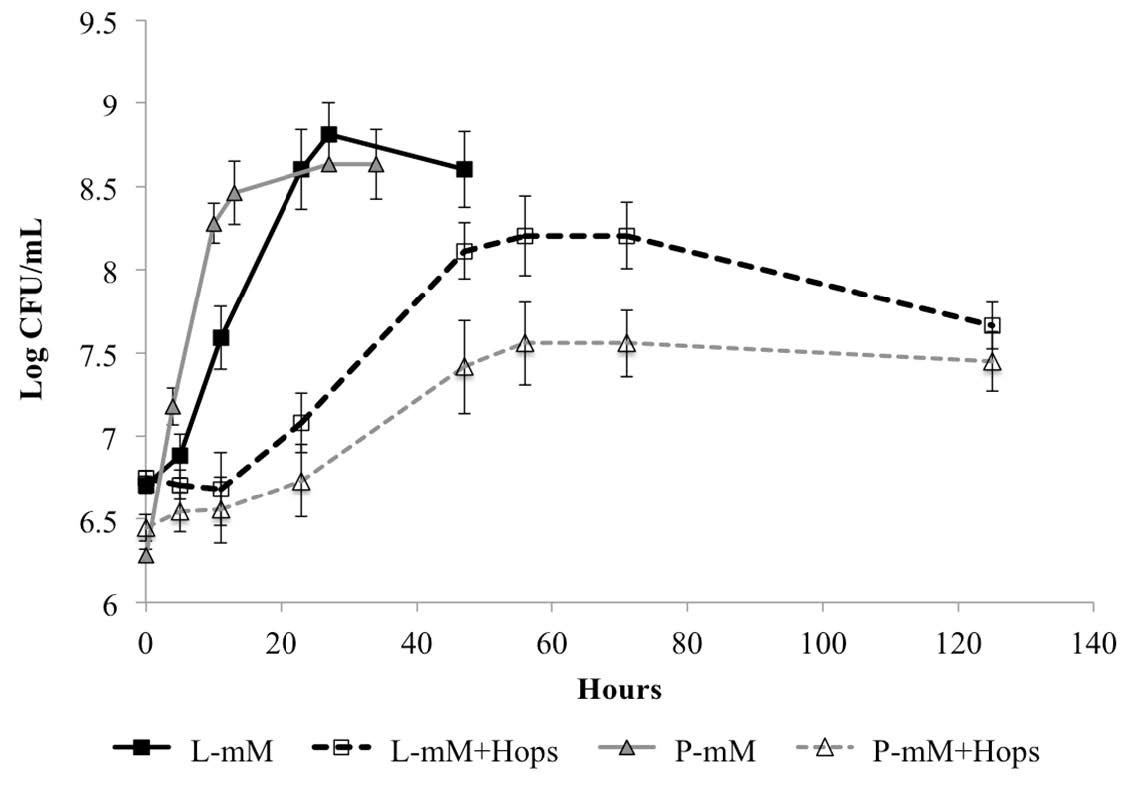
 DownLoad:
DownLoad: 